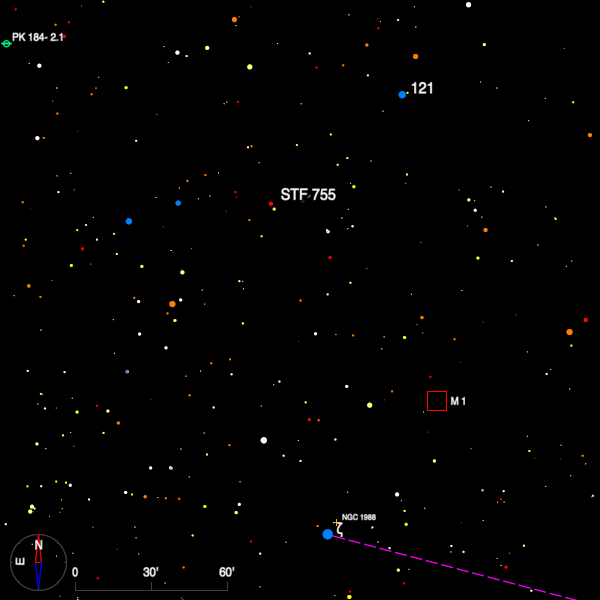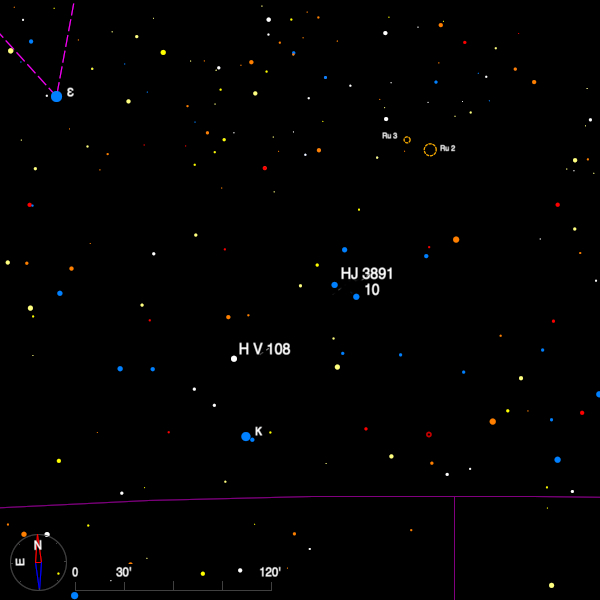January 2024 - Double Star of the Month
Admiral Smyth's Bedford Catalogue contains an entry for 124 Tauri, and from his description of it as a coarse quadruple star of which components B and C are 6".2 apart in PA 318 degrees this appears to agree with Struve's catalogue entry of STF 755 (05 39 09.17 +23 17 17.7).

According to the Washington Double Star catalog (WDS) A is magnitude 7.8 at 31 degrees and 149". This is HD 37387, a K2 giant star which appears close to the reflection nebula GN 05.36.2.The fourth star, D, is 50 degrees and 95" from A and has V = 11.1.
There is no label for 124 Tauri in the the Cambridge Double Star Atlas (2nd edition) but the star appears about 30' W of a small right-angled triangle of 6th magnitude stars which in turn sits 2 degrees NNE of zeta Tauri. Smyth happened upon it in 1835 whilst looking for Comet Halley. He gives the colours as garnet (A), pale blue-white (B,C) and bluish (D).
Some 3.5 degrees WSW of epsilon CMa is a triangle of 5th and 6th magnitude stars, the brightest of which is 10 CMa. In the same field, north following is HJ 3891 (06 45 31.20, -30 56 56.3), a double star discovered by John Herschel from the Cape of Good Hope.

The primary is a B2III star of V = 5.7, and is accompanied by a 8.2 magnitude star at 223 degrees and 5".0. There has been little change since 1838. The stars have similar parallaxes and the mean distance to the system is 1968 light-years. The primary star is also called HP CMa.
Just 90 arc-minutes to the SE is a wide pair swept up by the elder Herschel in 1782. H V 108 has stars of similar brightness (5.8 and 7.7) but they are separated by 43" in PA 66 degrees. The A component has a particularly close and faint companion just 0".6 away which was discovered from Robert Rossiter in South Africa, whilst the WDS notes that the B star has a variable radial velocity. Andrei Tokovinin regards this as a physical quadruple - the brighter stars appear in Gaia DR3 with respective distances of 634 and 623 light-years.
Bob Argyle - Double Star Section Director